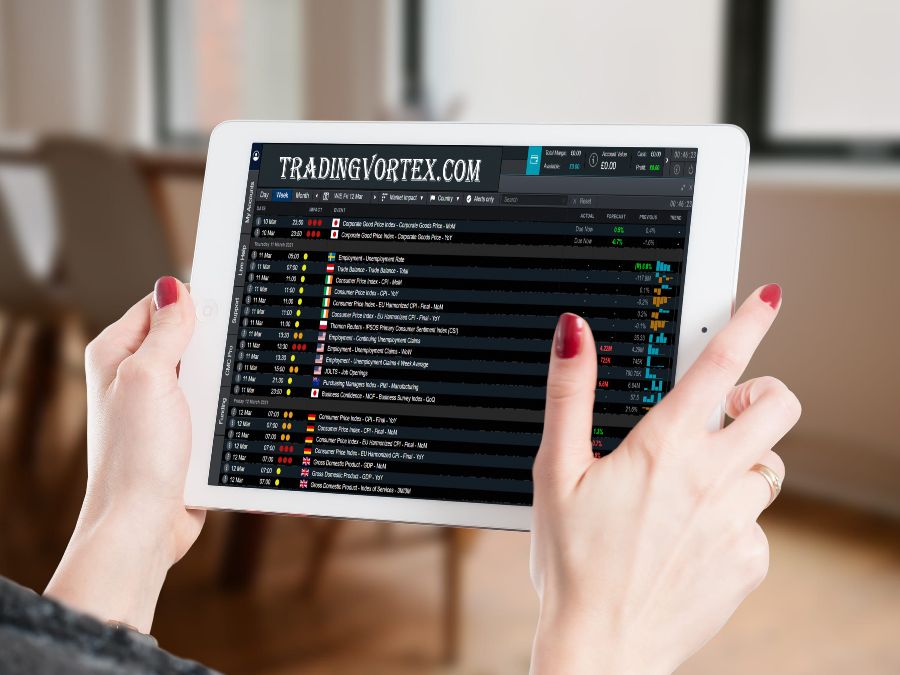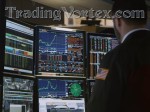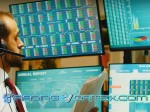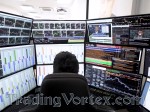Table Of Contents:
- What is Fundamental Analysis in Forex Trading?
Why is Fundamental Analysis Important in Forex Trading?
Key Economic Indicators for Fundamental Analysis:
Analyzing Central Bank Policies:
Using Economic Calendars for Fundamental Analysis:
Correlations and Relationships in Fundamental Analysis:
Case Studies in Fundamental Analysis:
Integrating Fundamental Analysis into Your Trading Strategy:
Risk Management in Forex Trading:
Enhancing Your Fundamental Analysis Skills:
Conclusion:
What is Fundamental Analysis in Forex Trading?
Defining Fundamental Analysis:
To put it simply, fundamental analysis seeks to answer questions like:
By addressing these questions, fundamental analysis provides traders with a comprehensive view of the macroeconomic landscape, equipping them with valuable insights for decision-making.
Differentiating Fundamental and Technical Analysis:
It's crucial to distinguish fundamental analysis from its counterpart, technical analysis. While both approaches aim to assist traders in making informed decisions, they do so in vastly different ways.
Fundamental analysis, as previously discussed, relies on examining economic indicators, central bank policies, and geopolitical events. It seeks to understand the underlying forces driving currency movements and is often used for long-term trading strategies. Traders who employ fundamental analysis might hold positions for weeks, months, or even years, based on their outlook of economic fundamentals.
On the other hand, technical analysis relies on historical price charts and patterns. It focuses on price trends, support and resistance levels, and various technical indicators. Technical analysts believe that historical price movements can offer insights into future price movements. This approach is often used for short to medium-term trading, where traders may enter and exit positions within a matter of hours or days.
In summary, while technical analysis examines past price data, fundamental analysis looks at the big picture of a currency's value, taking into account economic, political, and social factors. Both have their merits, and some traders even combine elements of both to make well-rounded trading decisions. However, this article will primarily focus on the art of fundamental analysis and how it can be harnessed effectively in forex trading.
Why is Fundamental Analysis Important in Forex Trading?
Factors Influencing Currency Exchange Rates:
Fundamental analysis is of paramount importance in forex trading due to its unique ability to uncover and assess the multitude of factors that sway currency exchange rates. These factors encompass a wide range of economic, political, and social variables, each capable of exerting a substantial impact on a currency's value.
- Economic Indicators: Economic data such as GDP growth rates, employment figures, and inflation rates are key drivers of currency movements. Traders use these indicators to gauge a country's economic health and potential future monetary policies.
- Central Bank Policies: Central banks play a pivotal role in shaping currency values. Their decisions regarding interest rates, quantitative easing, and forward guidance can lead to rapid and significant currency fluctuations.
- Geopolitical Events: Political stability, trade agreements, and international conflicts can cause abrupt shifts in currency markets. Geopolitical events often introduce uncertainty and volatility into the forex landscape.
- Market Sentiment: Traders' perceptions and sentiment can influence currency prices. Positive news may lead to bullish sentiment and currency appreciation, while negative news can trigger bearish sentiment and depreciation.
Benefits of Incorporating Fundamentals into Trading:
The significance of incorporating fundamental analysis into forex trading becomes evident when considering the tangible benefits it offers to traders:
- Long-Term Perspective: Fundamental analysis is particularly useful for traders with a long-term outlook. By assessing economic fundamentals and central bank policies, traders can make informed decisions about holding positions for extended periods, capitalizing on trends driven by economic forces.
- Anticipating Major Market Shifts: Geopolitical events, economic crises, and central bank announcements can lead to major market shifts. Fundamental analysis equips traders with the tools to anticipate and react to these events, potentially minimizing losses and maximizing profits.
- Informed Decision-Making: Instead of relying solely on technical indicators, traders using fundamental analysis have a more comprehensive understanding of why currency pairs move as they do. This knowledge helps them make more informed trading decisions.
- Risk Mitigation: Understanding the fundamental factors influencing currency movements enables traders to implement risk management strategies effectively. By being aware of potential market-moving events, traders can place protective measures in anticipation of volatility.
In summary, fundamental analysis is pivotal in forex trading because it unravels the intricate web of factors influencing currency exchange rates. It grants traders the ability to assess economic indicators, central bank policies, geopolitical events, and market sentiment, ultimately providing a deeper understanding of the market's dynamics and fostering more informed and strategic trading decisions.
Key Economic Indicators for Fundamental Analysis:
Fundamental analysis in forex trading revolves around a careful examination of various economic indicators, each providing vital insights into a country's economic health and, by extension, the strength of its currency. Here, we delve into the key economic indicators that form the bedrock of fundamental analysis:
Interest Rates and Central Banks:
Interest rates set by a country's central bank are a cornerstone of forex fundamental analysis. Central banks use interest rates to control monetary policy, and these rates directly affect a currency's appeal to investors. A higher interest rate typically leads to a stronger currency, as it offers better returns for investors. Conversely, lower interest rates can weaken a currency's value.
Gross Domestic Product (GDP):
GDP represents the total economic output of a country and is a crucial indicator for assessing its economic health. A growing GDP signifies a robust economy, often leading to currency appreciation. On the other hand, a stagnant or contracting GDP may result in currency depreciation.
Inflation and Consumer Price Index (CPI):
Inflation measures the increase in the general price level of goods and services in an economy. High inflation erodes a currency's purchasing power, making it less attractive to investors. The Consumer Price Index (CPI) is a widely used metric to gauge inflation. Traders closely monitor inflation data to anticipate central bank actions, as central banks often adjust interest rates in response to inflation trends.
Employment Data (Non-Farm Payrolls):
Employment data, particularly the Non-Farm Payrolls (NFP) report in the United States, provides insights into a country's labor market. Job growth and unemployment rates can impact consumer spending and economic growth, influencing currency values. Positive NFP reports can lead to a stronger currency, while negative reports may lead to depreciation.
Trade Balance and Current Account:
A country's trade balance reflects the difference between its exports and imports. A trade surplus (more exports than imports) can strengthen a currency, as it signifies strong demand for the country's goods and services. Conversely, a trade deficit (more imports than exports) can weaken a currency. The current account, which includes trade balance along with income from abroad and transfer payments, is also crucial for assessing a country's overall economic health.
Geopolitical Events and Their Impact:
Geopolitical events, such as elections, wars, and trade negotiations, can significantly impact currency markets. Political stability and international relations can influence investor sentiment and risk appetite, leading to currency fluctuations. Traders must stay informed about geopolitical developments and their potential consequences on currency pairs.
These key economic indicators are the building blocks of fundamental analysis in forex trading. By diligently monitoring and interpreting these factors, traders gain valuable insights into a country's economic conditions, helping them make informed decisions about currency pairs and positions. Understanding how these indicators interplay with each other and with global events is crucial for success in the dynamic world of forex trading.
Analyzing Central Bank Policies:
Central banks wield immense influence over currency markets, making a deep understanding of their policies and actions a critical component of successful forex trading. In this chapter, we will explore the nuances of central bank policies and their significance in the realm of fundamental analysis.
Role of Central Banks in Forex Markets:
Central banks, often referred to as the "lenders of last resort," play a pivotal role in the forex market. Their primary mandate is to maintain price stability and economic growth within their respective countries. Central banks achieve this by manipulating monetary policy tools, which have a direct impact on currency values.
Traders closely monitor central bank decisions, as these institutions have the authority to adjust interest rates, conduct open market operations, and employ unconventional measures like quantitative easing. These actions can swiftly alter the supply and demand dynamics of a nation's currency, leading to rapid price movements in the forex market.
Monetary Policy and Interest Rate Decisions:
Central banks primarily use changes in interest rates as a tool to implement monetary policy. When a central bank raises interest rates, it attracts foreign capital seeking higher yields, which can lead to currency appreciation. Conversely, lowering interest rates can discourage foreign investment and lead to currency depreciation.
Interest rate decisions are often accompanied by statements and press conferences, where central bank officials provide insights into their rationale and outlook. Forex traders meticulously analyze these communications, as they can offer valuable clues about future policy directions.
Central Bank Communication and Market Sentiment:
Central banks understand the influence of their words on market sentiment, and as such, they carefully craft their messages. Traders pay close attention to central bank communications, deciphering not only the decisions but also the tone and language used by policymakers.
A hawkish tone, indicating a willingness to raise interest rates, can boost a currency's value. Conversely, a dovish tone, signaling a preference for lower rates or stimulus measures, can lead to currency depreciation. Central bank speeches and statements often trigger market volatility, as traders react to shifts in sentiment and expectations.
Moreover, central banks may use forward guidance to provide markets with insight into their future policy intentions. This guidance can significantly impact currency values as traders adjust their positions based on anticipated central bank actions.
In essence, analyzing central bank policies is a cornerstone of fundamental analysis in forex trading. The decisions, statements, and actions of central banks have a direct and immediate impact on currency markets. Forex traders who adeptly navigate this landscape gain a competitive edge, as they can anticipate and respond to central bank policies effectively, harnessing the opportunities and managing the risks that arise from these influential institutions.
Using Economic Calendars for Fundamental Analysis:
Effective fundamental analysis in forex trading often hinges on staying well-informed about economic events and their potential impact on currency markets. Economic calendars serve as invaluable tools for traders seeking to keep abreast of these events and make informed decisions. In this chapter, we will explore the significance of economic calendars and how to decipher the wealth of information they provide.
Introduction to Economic Calendars:
A typical economic calendar includes a wide range of events, such as central bank interest rate decisions, employment reports, GDP releases, inflation data, and more. Each event is accompanied by important details, including the date and time of the release, the expected outcome, the previous result, and the level of impact it may have on the market.
Forex traders rely on economic calendars to plan their trading strategies, identify potential market-moving events, and manage their risk exposure. Whether you are a day trader or a long-term investor, staying informed about economic events is essential for making well-informed decisions.
How to Interpret Economic Calendar Events?
Interpreting events listed on an economic calendar requires a keen understanding of how each event can affect currency markets. Here are some key points to consider when deciphering economic calendar events:
- Event Importance: Economic calendars often assign impact levels to events, such as "high," "medium," or "low." High-impact events are more likely to cause significant market volatility and price swings.
- Expected vs. Actual: Traders pay close attention to the expected outcome versus the actual result of an economic event. If the actual result differs significantly from expectations, it can lead to sharp market reactions.
- Historical Data: Examining historical data and trends associated with specific economic events can provide insights into how currencies have reacted in the past. This historical context can be valuable for anticipating future movements.
- Correlations: Consider how the event may impact different currency pairs. Some events may have a more substantial impact on specific currencies or currency pairs, depending on the economic conditions and the event's relevance to those currencies.
- Market Sentiment: Be attuned to market sentiment leading up to an event. Traders often position themselves based on expectations, and shifts in sentiment can occur in response to news or data releases leading up to the event.
Economic calendars empower forex traders with the knowledge to navigate the market's twists and turns with precision. By understanding the significance of each event, its potential impact, and how it fits into the broader economic landscape, traders can make well-informed decisions and position themselves strategically to capitalize on market opportunities.
Correlations and Relationships in Fundamental Analysis:
Understanding the intricate web of correlations and relationships in fundamental analysis is a crucial aspect of successful forex trading. This chapter delves into the multifaceted connections between economic indicators and currency pairs, as well as the dynamics of cross-currency relationships.
Correlations Between Economic Indicators and Currency Pairs:
Fundamental analysis goes beyond analyzing individual economic indicators; it also involves recognizing the correlations between these indicators and their impact on currency pairs. Some essential correlations to consider include:
- Interest Rates and Currency Values: There is a strong correlation between a country's interest rates and the value of its currency. Higher interest rates typically lead to currency appreciation as they attract foreign capital seeking better returns. Conversely, lower interest rates can lead to currency depreciation.
- Inflation and Currency Values: Currency values are influenced by inflation rates. Currencies from countries with lower inflation rates tend to appreciate compared to currencies from countries with higher inflation rates.
- Economic Growth and Currency Strength: Strong economic growth often leads to currency strength, while economic slowdowns can result in currency depreciation. GDP growth and employment data are critical indicators in this regard.
- Trade Balance and Currency Values: Trade balances, particularly trade surpluses and deficits, can impact a country's currency. A trade surplus can strengthen a currency, while a trade deficit can weaken it.
Understanding Cross-Currency Relationships:
In the forex market, currencies are traded in pairs, and understanding cross-currency relationships is essential for comprehensive fundamental analysis. Cross-currency relationships refer to how one currency pair's movement can influence or be influenced by other currency pairs. Here are a few key cross-currency relationships:
- The US Dollar as a Benchmark: The US dollar (USD) serves as a benchmark currency in many currency pairs. Changes in the value of the USD can have a ripple effect on other currencies, impacting various currency pairs.
- Commodity Currencies: Currencies of countries heavily reliant on commodity exports (e.g., Australian Dollar - AUD, Canadian Dollar - CAD) often have strong correlations with commodity prices. These currencies can be influenced by changes in commodity markets.
- Safe-Haven Currencies: Safe-haven currencies like the Swiss Franc (CHF) and Japanese Yen (JPY) tend to strengthen during times of market uncertainty and risk aversion. Traders often seek these currencies during turbulent periods.
- European Crosses: Currency pairs involving the Euro (EUR) often exhibit correlations with one another due to shared economic factors and the Eurozone's interconnected economies.
In summary, comprehending the complex web of correlations and relationships within fundamental analysis is essential for forex traders seeking a holistic view of the market. Recognizing how economic indicators and currency pairs interact empowers traders to make more informed decisions and construct well-rounded trading strategies that account for the interconnectedness of the forex market.
Case Studies in Fundamental Analysis:
To grasp the practical application of fundamental analysis in forex trading, let's explore real-world case studies that highlight how this analytical approach can shape trading decisions. We'll delve into both successful and less successful trades, extracting valuable lessons along the way.
Real-world Examples of Fundamental Analysis in Forex Trading:
Case Study 1: Interest Rate Divergence.
In this case, we examine how interest rate differentials influenced the USD/JPY currency pair. The US Federal Reserve opted to raise interest rates due to robust economic growth, while the Bank of Japan maintained a low-interest-rate policy. The result was a widening interest rate gap between the two countries.
Traders who understood this fundamental dynamic anticipated that higher US interest rates would attract capital inflows into USD-denominated assets, leading to USD appreciation. Indeed, the USD/JPY pair experienced a prolonged uptrend as a result.
Case Study 2: Brexit and the British Pound (GBP).
The UK's decision to exit the European Union, known as Brexit, had a profound impact on the GBP. Leading up to the referendum and its aftermath, uncertainty and political instability dominated the landscape. Fundamental analysts tracked Brexit developments closely, recognizing the potential for currency turmoil.
The GBP/USD pair experienced significant volatility as events unfolded. Traders who closely monitored Brexit news were better prepared to react to sudden currency fluctuations, either capitalizing on opportunities or minimizing losses during turbulent times.
Lessons Learned from Successful and Failed Trades:
Lesson 1: Stay Informed and Anticipate Events.
Successful traders in the case studies were proactive in staying informed about critical events and their potential impact on currency pairs. They anticipated changes based on fundamental analysis, rather than reacting to surprise developments. This underscores the importance of keeping an eye on economic calendars, central bank decisions, and geopolitical events.
Lesson 2: Risk Management is Key.
Both successful and less successful trades taught us the paramount importance of risk management. In times of market uncertainty, risk management strategies such as setting stop-loss orders, diversifying portfolios, and managing position sizes can protect against significant losses. Even in cases where trades did not go as planned, disciplined risk management helped mitigate adverse effects.
Lesson 3: Fundamental Analysis Complements Technical Analysis.
While these case studies highlight the value of fundamental analysis, it's essential to note that many successful traders incorporate a blend of fundamental and technical analysis. Fundamental analysis provides the "why" behind currency movements, while technical analysis offers precise entry and exit points. Combining both approaches can enhance trading strategies.
In conclusion, case studies in fundamental analysis showcase the practical application of this analytical method in the dynamic forex market. These real-world examples underscore the importance of staying informed, managing risk, and recognizing that fundamental analysis is a valuable tool for traders seeking to navigate the complexities of currency markets successfully.
Integrating Fundamental Analysis into Your Trading Strategy:
Incorporating fundamental analysis into your forex trading strategy is a dynamic process that involves understanding economic fundamentals, assessing their impact on currency pairs, and integrating these insights into your trading decisions. This chapter explores the intricacies of seamlessly blending fundamental analysis with your trading approach.
Developing a Forex Trading Strategy with Fundamentals:
Step 1: Economic Calendar and Event Selection.
Begin by regularly reviewing economic calendars to identify high-impact events that align with your trading goals. Assess which events are relevant to the currency pairs you trade and prioritize them. High-impact events often include interest rate decisions, GDP releases, and employment reports.
Step 2: Economic Analysis and Forecasting.
Dive deep into economic analysis by researching and understanding the historical context and significance of the selected events. Evaluate the consensus forecasts and build your own expectations based on your analysis. Consider how potential outcomes might affect currency values.
Step 3: Risk Management and Position Sizing.
Before executing a trade, implement robust risk management strategies. Determine your risk tolerance and set appropriate stop-loss and take-profit levels. Calculate position sizes based on your risk parameters and the potential impact of fundamental events.
Step 4: Trading Plan Execution.
When the fundamental event unfolds, compare the actual results to your forecasts. Depending on the outcome, execute your trading plan as previously devised. Maintain discipline and stick to your risk management parameters.
Balancing Fundamental and Technical Analysis:
Integrating fundamental analysis into your trading strategy doesn't require discarding technical analysis. In fact, the synergy between these two approaches can strengthen your trading decisions. Here's how to strike a balance:
Technical Analysis for Entry and Exit Points:
Utilize technical analysis to pinpoint precise entry and exit points. Technical indicators, chart patterns, and support/resistance levels can help you time your trades effectively. Fundamental analysis informs the "what" and "why," while technical analysis refines the "when".
Confirming Signals with Fundamentals:
Before entering a trade, confirm your technical signals with fundamental insights. "For instance, if technical analysis suggests a bullish trend, validate this view with supportive economic fundamentals". This dual confirmation can boost your trading confidence.
Long-term vs. Short-term Strategies:
Consider your trading horizon when balancing fundamentals and technicals. Fundamental analysis is well-suited for long-term strategies, where you hold positions for extended periods. Technical analysis is often used for shorter-term trades, such as day trading or swing trading.
Continuous Learning and Adaptation:
Both fundamental and technical analysis evolve over time. Stay committed to learning and adapting your strategy as market conditions change. Economic environments and technical patterns can shift, so flexibility is key.
In summary, integrating fundamental analysis into your trading strategy is a dynamic process that involves selecting relevant events, conducting in-depth analysis, managing risk, and executing trades with discipline. By striking a balance between fundamental and technical analysis and continuously refining your approach, you can enhance your ability to make well-informed trading decisions and navigate the ever-changing forex market with confidence.
Risk Management in Forex Trading:
Efficient risk management is the bedrock of successful forex trading, serving as a safeguard against the inherent volatility of the market. In this chapter, we explore the critical aspects of risk management that every forex trader should understand and implement.
The Importance of Risk Management:
Effective risk management is not just a desirable aspect of forex trading; it is an absolute necessity. The forex market is renowned for its rapid price fluctuations and unpredictability. Without a well-thought-out risk management plan, traders expose themselves to significant financial losses.
Key Aspects of Risk Management:
- Capital Preservation: The primary goal of risk management is to protect your trading capital. By minimizing losses, you ensure that you have the resources to continue trading and capitalize on profitable opportunities.
- Emotional Stability: Risk management strategies help traders avoid impulsive decisions driven by fear or greed. Emotional stability is crucial for maintaining a disciplined and rational approach to trading.
- Long-term Viability: A comprehensive risk management plan ensures that your trading career can endure the inevitable ups and downs of the forex market. Consistency is key to long-term success.
Using Stop Loss and Take Profit Orders:
Stop Loss Orders:
A stop loss order is a predetermined price level at which a trader decides to exit a losing trade. It acts as a safety net, limiting potential losses. When setting a stop loss, consider the volatility of the currency pair and your risk tolerance. Placing a stop loss too close to your entry point may result in premature exits due to normal price fluctuations, while setting it too wide may expose you to larger losses.
Take Profit Orders:
Take profit orders are price levels at which traders choose to exit a winning trade to secure profits. Just like stop loss orders, take profit orders should be determined based on your trading strategy and risk-reward ratio. Setting a take profit order too close to your entry point might result in missed profit opportunities, while setting it too ambitious may lead to missed exits when the market reverses.
Position Sizing and Leverage Considerations:
Position Sizing:
Determining the size of your positions is a fundamental aspect of risk management. Position size should be calculated based on your account size, risk tolerance, and the distance from your entry point to your stop loss level. Smaller position sizes help limit losses, while larger positions amplify both gains and losses.
Leverage:
Leverage can magnify both profits and losses in forex trading. While it can provide opportunities for significant gains, it also increases the risk of substantial losses. Managing leverage wisely is essential for risk management. Using lower leverage ratios can help control risk, especially for beginners.
Diversification:
Diversifying your portfolio by trading multiple currency pairs can also mitigate risk. A well-diversified portfolio is less susceptible to a single adverse event affecting all positions simultaneously.
In summary, risk management is not an option; it's a prerequisite for successful forex trading. By implementing stop loss and take profit orders, determining appropriate position sizes, and considering leverage and diversification, traders can protect their capital and ensure their long-term viability in the forex market. Risk management should always be at the forefront of your trading strategy, allowing you to navigate the challenges and opportunities of forex trading with confidence and prudence.
Enhancing Your Fundamental Analysis Skills:
As you journey into the world of forex trading with fundamental analysis, there are several ways to enhance your skills and knowledge without relying on external resources. Let's explore these avenues:
Self-Analysis and Journaling:
Maintain a trading journal to document your trades, including the rationale behind each trade, your analysis of fundamental factors, and the outcomes. Regularly review your journal to identify patterns, strengths, and weaknesses in your fundamental analysis. This reflective practice can help you fine-tune your approach over time.
Real-time Market Observation:
Dedicate time to observe the forex market in real-time. Watch how currency pairs react to economic news releases, central bank decisions, and geopolitical events. This hands-on experience can deepen your understanding of how fundamentals impact price movements.
Peer Collaboration:
Engage with fellow traders and build a network of peers who share your interest in fundamental analysis. Collaborative discussions, sharing insights, and debating market dynamics with others can broaden your perspectives and expose you to alternative viewpoints.
Continual Learning:
Stay up-to-date with economic news and developments by following financial news outlets and subscribing to relevant newsletters. Being aware of global events and their potential impact on currencies is a continuous learning process.
Historical Data Analysis:
Analyze historical data, including past economic events and their effects on currency pairs. This exercise can help you identify recurring patterns and better anticipate future market reactions to similar events.
Backtesting:
Use backtesting to assess how your fundamental analysis would have performed in the past. This simulation of historical trades allows you to evaluate the effectiveness of your strategies without risking real capital.
Scenario Analysis:
Practice scenario analysis by creating hypothetical situations and assessing how different fundamental factors would influence currency pairs. This imaginative exercise can help you develop a more versatile and adaptable approach to trading.
Risk Management Protocols:
Continuously refine your risk management strategies. Adjust position sizes, leverage usage, and risk-reward ratios based on your evolving understanding of market dynamics and risk tolerance.
Psychological Preparation:
Mental fortitude is essential in forex trading. Develop emotional resilience by maintaining discipline, managing stress, and adhering to your trading plan, even in challenging situations.
By focusing on these internal development avenues, you can enhance your fundamental analysis skills and become a more proficient forex trader. Remember that success in the forex market is a result of both knowledge and discipline, and a commitment to continual improvement is key to achieving your trading goals.
Conclusion:
In the world of forex trading, where currencies are bought and sold around the clock, fundamental analysis stands as a beacon of insight, offering traders a profound understanding of the market's underlying forces. Through this journey into the realm of fundamental analysis, we've explored its intricacies and uncovered the tools to harness its power.
Recap of Key Points:
Fundamental analysis in forex trading revolves around understanding the economic factors that influence currency values. It's a holistic approach that considers a wide array of factors, including interest rates, economic growth, inflation, trade balances, and geopolitical events. We've learned how to decipher economic calendars, analyze central bank policies, and navigate the web of correlations between economic indicators and currency pairs. We've also explored real-world case studies, emphasizing the importance of risk management and position sizing. Lastly, we've discussed resources to enhance your fundamental analysis skills.
The Ongoing Journey of a Forex Trader Using Fundamentals:
As you embark on your journey as a forex trader using fundamentals, remember that it's not a destination but a continuous exploration. The forex market is ever-evolving, influenced by shifting economic landscapes, geopolitical developments, and market sentiment. To thrive in this dynamic environment, you must remain committed to ongoing learning, adaptability, and the disciplined application of your newfound knowledge.
Fundamental analysis is your compass in this journey, helping you navigate the twists and turns of the forex market. It provides you with the "why" behind currency movements, allowing you to make informed decisions and anticipate market trends. However, success in forex trading is not solely determined by your ability to analyze fundamentals; it's equally influenced by your psychological resilience, risk management strategies, and the synergy between fundamental and technical analysis.
As you continue to refine your trading skills and deepen your understanding of fundamental analysis, remember that every trade is a learning opportunity. Embrace both your successes and setbacks as valuable lessons that contribute to your growth as a forex trader. With a commitment to continuous improvement and a solid foundation in fundamentals, you are well-equipped to navigate the dynamic world of forex trading and work toward achieving your financial goals.
So, venture forth with confidence, equipped with the knowledge of fundamentals, and embrace the ongoing journey of a forex trader. The world of currency trading awaits, and with the right tools and mindset, you can chart your course towards success.








































 TradingVortex.com® 2019 © All Rights Reserved.
TradingVortex.com® 2019 © All Rights Reserved.